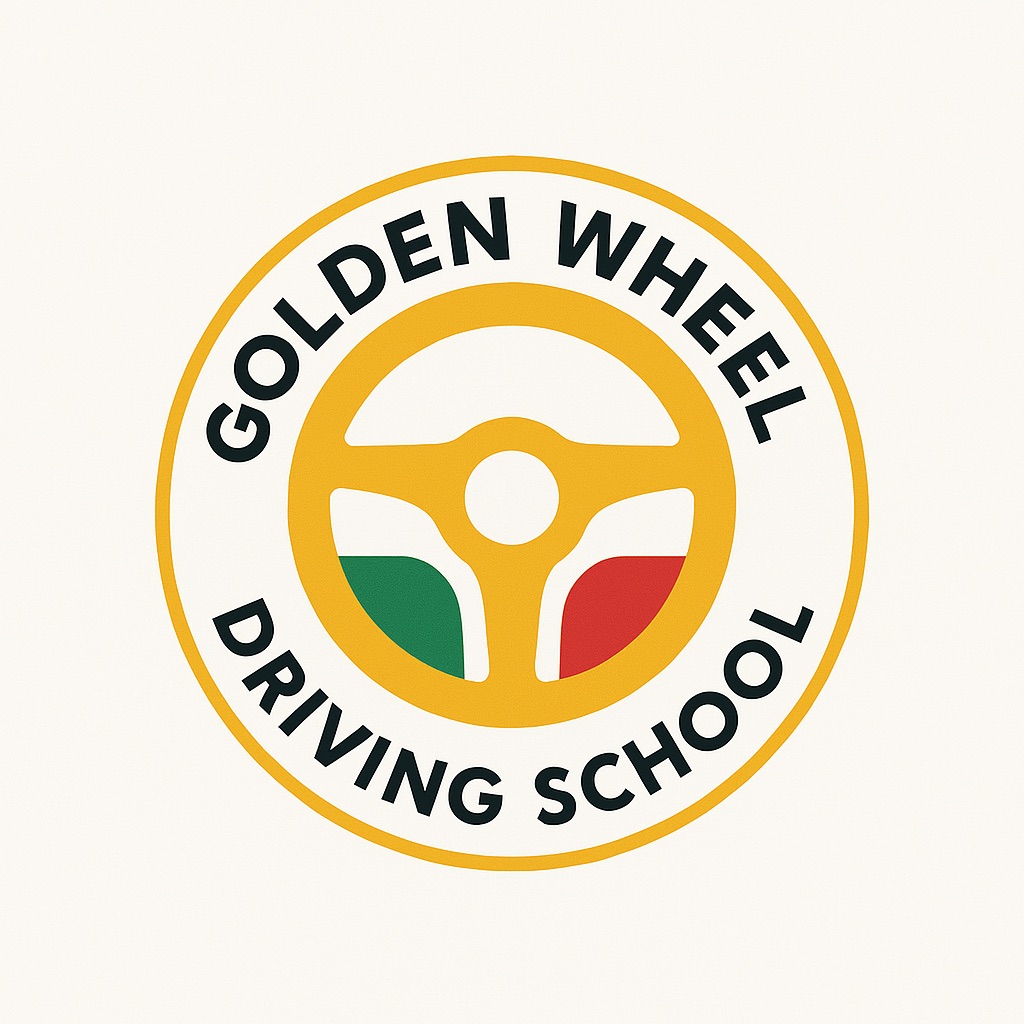what is the best age to start driving school?
Learning to drive is a significant milestone in a person’s life, and choosing the right time to start driving school can make all the difference. At Golden Wheel Driving School, we understand the importance of timing in driver education.

Starting driver education at the optimal age can help learners develop good driving habits and reduce the risk of accidents. Our programs are designed to cater to learners of various ages and skill levels, ensuring that everyone can become a confident and safe driver.
As we explore the ideal age for driver’s education, we’ll discuss the benefits of starting early and how our approach at Golden Wheel Driving School can help learners succeed.
Key Takeaways
- Understanding the importance of timing in driver education
- Exploring the optimal age to start driving school
- Learning how Golden Wheel Driving School’s programs can benefit learners
- Discovering the benefits of starting driver education at a young age
- Developing good driving habits and reducing accident risk
Understanding Legal Driving Age Requirements in the United States
Understanding the legal driving age requirements is crucial for new drivers and their families as they embark on the journey to obtaining a driver’s license. The United States has a complex system, with regulations varying significantly from one state to another.
Minimum Age for Learner’s Permits Across States
The minimum age for obtaining a learner’s permit is not uniform across the U.S.; it ranges from 14 to 16 years old, depending on the state’s laws. For instance, some states allow teenagers to apply for a learner’s permit at the age of 15, while others require them to be at least 16. Golden Wheel Driving School operates in multiple states, including California, where the minimum age is 15 and a half years old.
Graduated Driver Licensing (GDL) Programs Explained
Most states implement Graduated Driver Licensing (GDL) programs, designed to gradually introduce driving privileges to new drivers. These programs typically consist of three stages: learner’s permit, provisional license, and full licensure. GDL programs aim to reduce the risk of accidents among new drivers by gradually increasing their driving privileges as they gain experience and demonstrate safe driving practices.
State-Specific Requirements and Variations
State-specific requirements for driving age and licensure vary widely. For example, some states have stricter night driving restrictions or passenger limits for provisional license holders. The table below highlights some of the differences in driving age requirements across selected states.
| State | Minimum Age for Learner’s Permit | Minimum Age for Provisional License |
|---|---|---|
| California | 15.5 | 16 |
| New York | 16 | 16.5 |
| Texas | 15 | 16 |
It’s essential for new drivers and their families to familiarize themselves with the specific requirements in their state to navigate the licensing process smoothly.
What is the Best Age to Start Driving School?
Starting driving school is a significant milestone, but determining the optimal age can be challenging. The decision involves considering various factors, including the individual’s maturity, ability to learn, and legal requirements.
The 15-16 Age Range: Pros and Cons
Many teenagers start driving school between the ages of 15 and 16, as it is a common age range for obtaining a learner’s permit in many states. The pros include having more time to practice driving and becoming comfortable behind the wheel before taking the driving test. However, some may argue that teenagers at this age might not have the necessary maturity or responsibility.
On the other hand, starting at 15-16 allows for a gradual learning process, aligning with Graduated Driver Licensing (GDL) programs that many states implement. This can be beneficial for young drivers, as it provides a structured environment to gain driving experience.
Starting at 17-18: Benefits and Considerations
For some, waiting until they are 17 or 18 to start driving school might be more beneficial. At this age, individuals are likely to be more mature and responsible, potentially making them better learners. A key benefit is the likelihood of being more focused and less distracted during the learning process.
- More maturity and responsibility
- Better decision-making skills
- Possibly fewer distractions during learning
However, starting later might mean less time to practice and gain experience before becoming independent drivers.
Adult Learners: Is Later Better?
For adults learning to drive, the considerations are different. Life experience and self-discipline can be significant advantages. Adults are often more motivated and can dedicate focused time to learning.
Overcoming Anxiety as an Older Beginner
One of the challenges adult learners might face is anxiety. Creating a supportive learning environment and practicing relaxation techniques can help mitigate this. It’s also beneficial to start with small, manageable steps, gradually increasing the complexity of driving tasks.
“The key to learning is not the age, but the willingness to learn and the support system you have.”
– Driving Instructor
In conclusion, the best age to start driving school varies depending on individual factors, including maturity, responsibility, and personal circumstances. Whether you’re a teenager or an adult, the key to successful driving education is a combination of the right mindset, supportive guidance, and practice.
Developmental Factors That Influence Driving Readiness
Driving readiness is not solely determined by age; several developmental factors play a significant role. Assessing an individual’s readiness to drive involves evaluating various aspects of their development.
Cognitive Development and Decision-Making Skills
Cognitive development is crucial for driving, as it affects an individual’s decision-making skills, attention, and ability to process information. Decision-making skills are particularly important, as they enable drivers to respond appropriately to complex driving scenarios.
Emotional Maturity and Impulse Control
Emotional maturity is another critical factor that influences driving readiness. It impacts an individual’s ability to control impulses, manage stress, and remain calm under pressure. Drivers with higher emotional maturity tend to be more patient and less prone to risky behaviors.
Physical Coordination and Spatial Awareness
Physical coordination and spatial awareness are also essential for safe driving. These attributes enable drivers to maneuver vehicles effectively, judge distances, and respond to changing road conditions.
Attention Span and Multitasking Abilities
Attention span and the ability to multitask are vital components of driving readiness. Drivers need to be able to focus on the road, monitor their surroundings, and perform multiple tasks simultaneously, such as steering, accelerating, and braking.
| Developmental Factor | Importance for Driving | Indicators of Readiness |
|---|---|---|
| Cognitive Development | Decision-making and information processing | Ability to solve complex problems and react to unexpected situations |
| Emotional Maturity | Impulse control and stress management | Patient behavior and calm demeanor under pressure |
| Physical Coordination | Vehicle control and spatial awareness | Ability to maneuver the vehicle smoothly and judge distances accurately |
By considering these developmental factors, parents and driving instructors can better assess an individual’s readiness to drive and provide targeted support to enhance their driving skills.
The Science Behind Teen Driving and Risk Assessment
Research into teen driving reveals a complex interplay between brain development, risk assessment, and accident statistics. As teens begin to drive, they face a myriad of challenges that are not only related to their driving skills but also to their neurological and emotional development.
Brain Development and Risk Perception
The teenage brain is still in the process of maturation, particularly in areas responsible for risk assessment and impulse control. Studies have shown that the prefrontal cortex, which governs decision-making, is not fully developed until the mid-20s. This delayed development can lead to impulsive decisions and a higher propensity for risk-taking behaviors while driving.
Some key findings on brain development and driving include:
- The brain’s reward system is more active in teenagers, potentially leading to reckless driving behaviors.
- The process of myelination, which enhances the speed of neural transmissions, continues into young adulthood, affecting reaction times.
- Synaptic pruning, a process that refines neural connections, also occurs during this period, influencing cognitive functions.
Research on Age and Accident Statistics
Statistical analysis of accident data reveals a significant correlation between driver age and accident risk. Teenagers, particularly those under 18, are at a higher risk of being involved in car accidents. According to the National Highway Traffic Safety Administration (NHTSA), in 2020, there were over 2,600 fatalities in crashes involving teenage drivers in the United States.
| Age Group | Number of Accidents | Fatality Rate per 100 Million Miles Traveled |
|---|---|---|
| 16-17 years | 234,561 | 4.6 |
| 18-19 years | 211,451 | 3.9 |
| 20-24 years | 341,119 | 3.1 |
The Impact of Peer Pressure on Young Drivers
Peer pressure is another critical factor that influences teen driving behaviors. The presence of peers can distract young drivers and encourage riskier driving practices. Research indicates that teen drivers are more likely to engage in risky behaviors when accompanied by their peers.

To mitigate these risks, it’s essential for parents, educators, and policymakers to understand the underlying factors contributing to teen driving risks. By addressing these factors through education, policy, and practice, we can work towards reducing the number of accidents involving young drivers.
Benefits of Starting Driver Education Early
Driver education initiated at a young age can lead to a lifetime of safe driving habits. By starting early, new drivers can enjoy a range of benefits that enhance their driving skills and safety on the road.
Extended Learning Period and Practice Time
One of the primary advantages of early driver education is the extended learning period it provides. With more time to practice and learn, new drivers can gradually build their skills and confidence behind the wheel. This prolonged exposure to driving under various conditions helps in developing well-rounded driving abilities.
Building Confidence Gradually
Early driver education allows learners to build confidence gradually. By spreading out the learning process over a longer period, new drivers can become more comfortable with different driving scenarios, reducing the likelihood of accidents caused by inexperience or overconfidence.
Developing Lifelong Safe Driving Habits
Safe driving habits are crucial for minimizing the risk of accidents. Starting driver education early instills these habits from the outset, making safe driving practices second nature.
Creating Muscle Memory for Driving Skills
Repeated practice is key to creating muscle memory for driving skills. Early driver education programs emphasize the importance of consistent practice, helping new drivers develop the automatic responses necessary for safe driving.
Key benefits of early driver education include:
- Enhanced driving skills through extended practice
- Gradual confidence building
- Lifelong safe driving habits
As noted by driving safety experts, “Early driver education is crucial for developing safe driving habits and reducing the risk of accidents among new drivers.”
Signs Your Teen is Ready for Driving School
Assessing your teenager’s readiness for driving school involves looking beyond their age. It’s about understanding their maturity level, responsibility, and ability to handle the challenges of driving.
Responsibility Indicators
One of the key signs of readiness for driving school is your teen’s level of responsibility. This can be observed in their daily routines and tasks. Do they consistently complete their chores on time? Are they reliable in following through with commitments? These behaviors indicate a level of maturity that is essential for the responsibility of driving.
Interest and Motivation Levels
A teen’s interest and motivation to learn driving skills are crucial. If they show a genuine eagerness to start driving and are willing to put in the effort required to learn, it’s a positive sign. Their motivation can be a driving force (no pun intended) that helps them navigate the learning process more effectively.
Ability to Handle Stress and Pressure
Driving, especially in the initial stages, can be stressful. A teen who can handle stress and pressure is more likely to remain calm and make rational decisions while driving. This ability can be gauged by observing how they react to stressful situations in other areas of life.
Demonstrating Good Judgment in Other Areas
Good judgment is a critical trait for safe driving. If your teen consistently demonstrates good judgment in other aspects of their life, such as in academics or extracurricular activities, it’s a good indicator that they might also exhibit it while driving. Look for instances where they make sound decisions and consider the consequences of their actions.
By paying attention to these signs, you can make a more informed decision about whether your teen is ready to start driving school. It’s not just about meeting the legal age requirement; it’s about ensuring they have the maturity and skills necessary to drive safely.
How Parents Can Support New Drivers at Different Ages
Guiding a new driver through their learning journey requires patience, understanding, and effective support. As a parent, your role is crucial in shaping their driving skills and attitude towards safety on the road.
Creating a Positive Learning Environment
A positive learning environment is essential for new drivers to feel comfortable and confident. Minimize distractions during practice sessions, and ensure the vehicle is in a good condition. This helps in reducing stress and allows the new driver to focus on their driving skills.
Setting Clear Expectations and Boundaries
It’s vital to set clear expectations and boundaries for new drivers. Establishing rules and consequences helps them understand the importance of safe driving practices. This includes setting limits on nighttime driving or the number of passengers allowed in the vehicle.
Modeling Good Driving Behavior
Parents should model good driving behavior as new drivers often mimic their parents’ driving habits. Demonstrating safe driving practices such as obeying speed limits, wearing seatbelts, and avoiding distractions while driving is crucial.
Effective Communication During Practice Sessions
Effective communication is key during practice driving sessions. Provide constructive feedback that is specific, positive, and focused on the behavior rather than the person. This helps in building the new driver’s confidence and skills.
By following these guidelines, parents can provide the necessary support to new drivers, helping them become competent and safe drivers. Effective support from parents can significantly reduce the risks associated with new drivers.
Golden Wheel Driving School’s Approach to Different Age Groups
With a focus on personalized learning, Golden Wheel Driving School provides driving education tailored to the learner’s age and experience. This approach ensures that all students, regardless of their age, receive the most effective training.
The school recognizes that learners at different stages of life have unique needs and capabilities. Therefore, it has developed a range of programs designed to cater to these diverse requirements.
Specialized Programs for Teen Drivers
For teen drivers, Golden Wheel Driving School offers comprehensive programs that include both theoretical knowledge and practical driving skills. These programs are designed to be engaging and interactive, ensuring that young learners stay motivated throughout their training.
The school’s teen programs also focus on safety, teaching new drivers how to assess risks and make safe decisions on the road.
Adult Driver Education Options
Adults looking to learn or improve their driving skills can benefit from Golden Wheel Driving School’s adult education options. These programs are tailored to the needs of adult learners, focusing on building confidence and competence behind the wheel.
Whether it’s for a new driver or someone looking to refresh their skills, the adult programs are designed to be flexible and accommodating.
Refresher Courses for Experienced Drivers
For experienced drivers, Golden Wheel Driving School offers refresher courses that help update their skills and knowledge according to the latest driving regulations and best practices.
Personalized Instruction Methods Based on Age and Experience
One of the key strengths of Golden Wheel Driving School is its personalized instruction methods. Instructors assess each learner’s abilities and tailor their teaching to match the learner’s pace and learning style.
This personalized approach ensures that all learners, regardless of age or experience, achieve their driving goals efficiently.

| Age Group | Program Focus | Key Features |
|---|---|---|
| Teen Drivers | Safety and Fundamentals | Interactive learning, risk assessment |
| Adult Learners | Confidence and Competence | Flexible scheduling, personalized instruction |
| Experienced Drivers | Refresher and Update | Latest regulations, best practices |
Online vs. In-Person Driving Education: What Works Best for Each Age Group
Driving schools now offer a mix of online and in-person education, catering to different age groups and learning styles. This flexibility is crucial in ensuring that learners can choose the method that best suits their needs and preferences.
Virtual Learning Components for Different Ages
Online driving education has become increasingly popular, especially among younger learners who are familiar with digital platforms. For teenagers, online courses can provide a flexible and engaging way to learn the theoretical aspects of driving. Adults, too, can benefit from the convenience of online learning, allowing them to balance their learning schedule with other responsibilities.
Key benefits of online driving education include:
- Flexibility in learning schedule
- Access to a wide range of study materials
- Self-paced learning
Hands-on Training Requirements
While online education can cover theoretical aspects, hands-on training is essential for developing practical driving skills. In-person driving lessons provide learners with the opportunity to practice driving under the supervision of a qualified instructor. This is particularly important for new drivers, who need to develop their driving skills in a safe and controlled environment.
Hybrid Approaches at Golden Wheel Driving School
Golden Wheel Driving School offers a hybrid approach, combining the benefits of online and in-person education. Their program allows learners to complete theoretical coursework online, followed by in-person driving lessons. This approach caters to different learning styles and preferences, ensuring that learners are well-prepared for the driving test.
| Age Group | Online Education | In-Person Education | Hybrid Approach |
|---|---|---|---|
| Teenagers (15-18) | Suitable for theory learning | Essential for practical skills | Recommended for comprehensive learning |
| Young Adults (19-25) | Flexible and convenient | Beneficial for practice and feedback | Ideal for balancing theory and practice |
| Adults (26+) | Convenient for busy schedules | Helpful for refreshing driving skills | Suitable for those needing a refresher |
In conclusion, the choice between online, in-person, and hybrid driving education depends on the learner’s age, learning style, and preferences. Golden Wheel Driving School’s flexible programs cater to these diverse needs, ensuring that learners receive the best possible education.
Balancing Driving Education with Other Teen Responsibilities
As teens navigate their busy schedules, finding the right balance between driving education and other responsibilities becomes crucial. Teenagers today are often juggling schoolwork, extracurricular activities, part-time jobs, and social commitments, making it essential to manage their time effectively.
School and Academic Priorities
Academic responsibilities should always be a top priority for teens. Effective time management is key to balancing driving education with schoolwork. Teens can create a study schedule that accommodates driving practice sessions and theory classes.
Extracurricular Activities and Time Management
Extracurricular activities are an essential part of a teen’s development, teaching valuable skills such as teamwork and leadership. To balance these activities with driving education, teens should prioritize their commitments and allocate specific times for driving practice.
Part-Time Jobs and Driving Independence
Many teens take on part-time jobs to gain work experience and financial independence. Driving education can be integrated into their schedules by choosing flexible driving school programs that offer online theory classes or scheduling driving practice on less busy days.
Creating a Realistic Learning Schedule
To successfully balance driving education with other responsibilities, creating a realistic learning schedule is vital. Here’s a simple table to help plan out a weekly schedule:
| Day | School/Work | Driving Practice | Extracurricular |
|---|---|---|---|
| Monday | School | – | Club Meeting |
| Tuesday | Part-time Job | Driving Practice | – |
| Wednesday | School | – | Practice |
| Thursday | – | Theory Class | Club Activity |
| Friday | School | Driving Practice | – |
By planning ahead and being committed, teens can successfully balance their driving education with other responsibilities, ensuring they become safe and confident drivers.
Conclusion: Making the Right Decision for Your Driving Journey
Choosing the right age to start driving school is a crucial decision that depends on various factors, including individual readiness, state requirements, and personal circumstances. Throughout this article, we’ve explored the different aspects to consider when determining the suitable age for driving instruction.
From understanding legal driving age requirements to assessing developmental factors and the benefits of early driver education, it’s clear that there’s no one-size-fits-all answer. The key is making the right decision for your driving journey, whether you’re a teenager or an adult learner.
By considering the signs of readiness, the role of parents in supporting new drivers, and the various approaches to driving education, you can make an informed decision that suits your needs. Golden Wheel Driving School’s flexible programs cater to different age groups and learning styles, ensuring that you receive the instruction you need to become a confident and safe driver.
Ultimately, the right age to start driving school is when you’re ready to embark on your driving journey. With the right guidance and support, you’ll be well on your way to achieving your driving goals.







